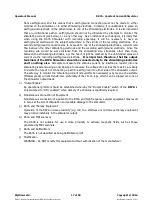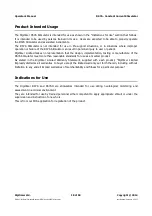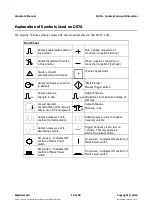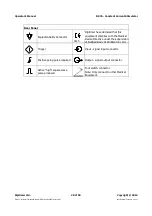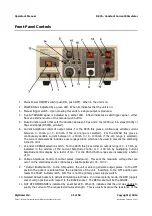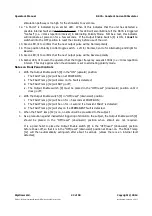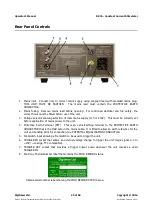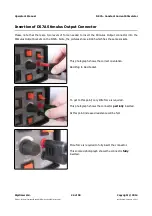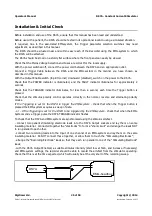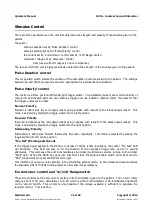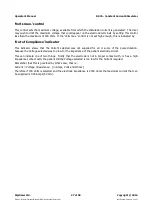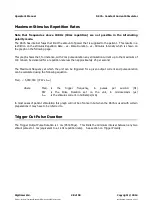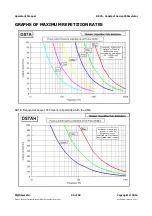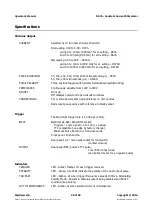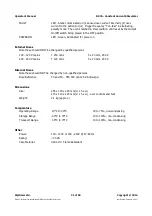
Operator's Manual
DS7A - Constant Current Stimulator
Continued...
b) Explosion and Fire.
The DS7A must not be used in an explosive atmosphere or in the presence of flammable anaesthetic
gases.
c) High voltages
Dangerous voltages are present within this unit. Do not remove covers, and refer servicing to
qualified personnel.
d) Damage
The DS7A and/or any accessories must not be used if there are any signs of external damage.
e) Moisture
The DS7A and/or any accessories must not be used if any parts are damp or wet.
f) Input/Output Connectors
Only equipment that complies with EN(IEC) 60601 (Medical Equipment), EN(IEC) 60950 (IT
Equipment) or EN(IEC) 61010 (Laboratory Equipment) should be connected to the input/output
connectors. See Appendix 6 for guidance on choice of equipment and system integration.
g) Electrical Interference
This unit has been fully tested for EMC conformity of Medical Devices. This unit should NOT be used
near radio transmitters. If any "strange" behaviour of the unit is noted, discontinue use immediately
and refer to qualified EMC engineer. Refer to Appendix 5 for further information.
h) Electrical Stimulation Safety
The safety considerations involved in electrical stimulation for motor evoked potentials have been
reviewed by Agnew and McCreery (1987) and by Barker et al (1988). These papers are listed in the
appendices of this manual and should be fully read.
i) Electronic Implants
Understand that this unit may not be appropriate for use on patients with cardiac pacemakers or
electronic implants.
j) Do NOT use transthoracically
Only use this Stimulator on one limb at a time. Do NOT use transthoracically. Doing so could
influence the rhythm of the heart.
k) Do NOT stimulate over the carotid sinus nerves, neck and mouth
Stimulation should not be applied over carotid sinus nerves, particularly in patients with a known
sensitivity to the carotid sinus reflex. Severe spasm of the laryngeal and pharyngeal muscles may
occur and the contractions may be strong enough to close the airway or cause difficulty in
breathing.
l) Needle Electrodes
Please note that where “Percutaneous Stimulation” is referred to in this document, it means
“Electrical Stimulation Through the Skin” and NOT the use of Needle electrodes.
The use of Needle Electrodes is NOT recommended, due to the possibility of high current densities
at stimulation sites.
m) Electrode Isolation
The following generally applies to the use of nerve and muscle stimulators, and especially those
designed for percutaneous use. See, for example, the section on Safety of Apparatus in Guld et al,
1970
. It is essential for safety that the connections from the stimulator to the subject are isolated
1
Guld, C., Rosenfalk, A., and Willison, R. G.
(1970), Technical factors in recording electrical activity of
muscle and nerve in man.
Electroenceph. Clin. Neurophysiol
.,
28
:399-413
Digitimer Ltd.
16 of 58
Copyright © 2014
File Ref: N:\Docs\Company\Manuals\DS7A\Issue-14\DS7A-iss14.odt
Last Revised: February 1, 2017
















